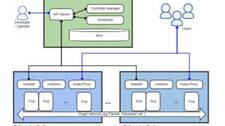How to Compare and Contrast APIs to Improve DevOps Processes
Source:-devops.com The cloud is driving digital transformation, from web applications to mobile applications, from partner integrations to API monetization. Even custom applications are moving into the cloud. If you draw a line through all these trends, APIs would be at the heart of it all. We know we need to eat our vegetables to keep our heart healthy, but sometimes it is easier to order takeout after a long day of work. Healthy API hygiene works the same way. In
Read more















